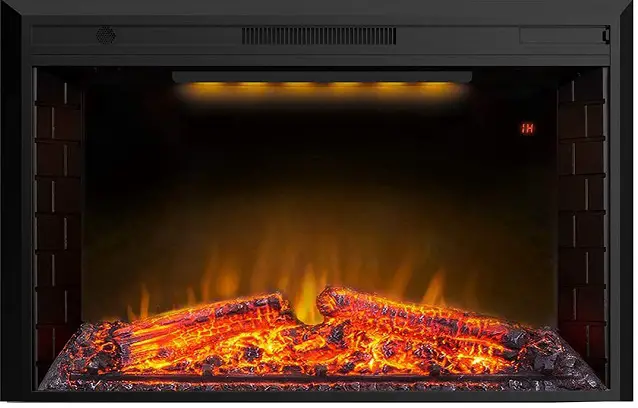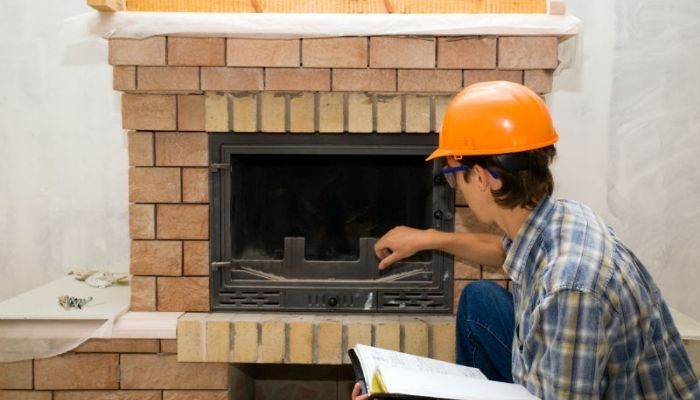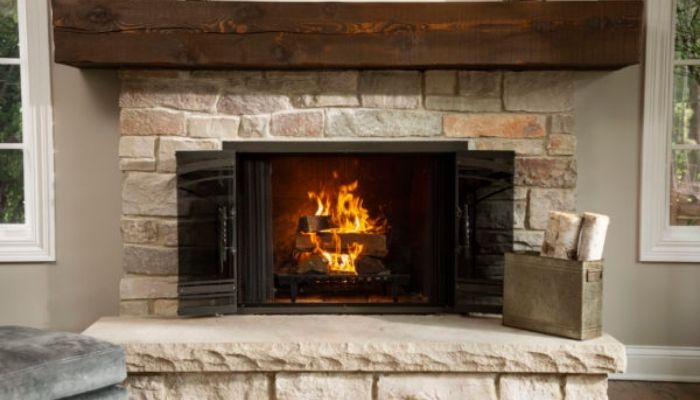Yes, a gas fireplace can also overheat. But the good news is that most gas fireplaces have internal controls that shut down in case of excess heat. Excess heat in gas fireplaces is very dangerous because it can cause cracking of the gas logs and mantel. The excess heat can also cause the hearth floor to crack.
Wood burning fireplaces also suffer from overheating. And with a wood-burning fireplace, it is hard to control the excess heat. Always monitor the temperature around the fireplace to ensure it is not overheating. Use a probe thermometer to check the temperature and ensure it does not pass 180F.
Why Does My Gas Fireplace Get so Hot?
Once your gas fireplace gets hot then it directly affects the mantle. The mantle can be said to be the housing of your fireplace. You will know something is wrong with your fireplace when the mantle gets hot. There are several reasons your mantel/fireplace can get very hot. Below are some of them.
- Wrong installation of the fireplace
This is the main reason behind the overheating of a fireplace. A gas fireplace needs an expert to install it. Any little improper installation can lead to overheating of the fireplace. Read through the fireplace manual to see if it was installed properly.
A critical part of a gas fireplace is the fireplace flue. This is the part that allows excess heat and fumes to escape through the chimney. Once the flue is not working the excess heat will accumulate in the fireplace leading to overheating of the mantle.
- Wrong types of gas logs
Gas logs can either be wooden or ceramic. Ceramic gas logs add aesthetics to your gas fireplace but they also cause your gas fireplace to overheat. Ceramic logs produce a lot of heat in a short time causing the mantle to also heat up. Wooden gas logs are old-fashioned but heat the fireplace slowly and smoothly.
Experts suggest, if you choose to use ceramic gas logs, then move them around after some time so that they do not accumulate a lot of heat. However, this method is time-consuming and can lead to injuries.
How Hot is Too Hot for a Fireplace?
The gas fireplace itself can heat up to 1000F but this temperature is not supposed to be transferred to the mantel wall. The acceptable temperature for the mantle is between 180F and 190F. Anything above that will be too hot for you to touch the mantle.
A fireplace mantel is supposed to be warm, when it gets too hot then something is wrong with the fireplace. Always install a heat shield before installing the fireplace. The heat shield will reduce the temperature conducted by the fireplace.
How do I Reduce the Heat in My Gas Fireplace?
Sometimes your gas fireplace is installed properly and you are also using the correct type of logs but still, it is overheating. Then you have to find ways to reduce the excess heat in your firebox. When the firebox is cool then the mantle also will be cool. Below are some of the methods you can use to reduce the heat in your gas fireplace.
- Fireplace blower
This is the best method you can use to reduce the heat. The blower is installed in the fireplace insert. Turn it on when you notice the fireplace is getting too hot. Do not turn it on before the fireplace starts to heat up. Because it will make the fireplace consume a lot of gas fuel so that it achieves the desired temperature.
- Use the tin foil
A tin foil has a reflective surface. Place it on top of the firescreen and it will deflect excess heat from the fireplace. Doing so will ensure that no heat reaches the mantle hence it remains cool. The tin foil goes hand in hand with the heat shield in the mantle.
- Use ceiling fans
You can also install ceiling fans in the room with the fireplace. Ceiling fans help to distribute heat in the room hence heat absorbed by the mantle is released into the air.
How Long Can You Leave the Gas Fireplace on?
Experts say that you should not leave your gas fireplace to run continuously for more than three hours. However, this condition also depends on the type of gas fireplace. Ventless gas fireplaces should not run for long because they release a lot of fumes back into the room.
Vented gas fireplaces can run for a long time because they have a chimney that allows fumes to escape outside. Such gas fireplaces can run for a long time past three hours.
Conclusion
Poor installation style and wrong types of gas logs are the main reasons a gas fireplace can overheat. Use the manual to inspect if your gas fireplace was installed well. A fireplace blower is the best device you can use to reduce the heat in your fireplace and firebox. Ceiling fans and tin foils can also help you reduce the heat.


